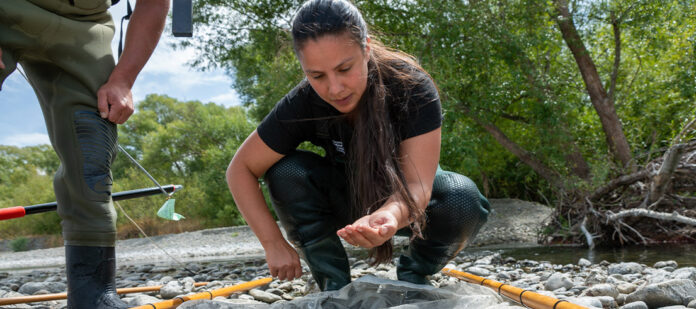Source: Environment Canterbury Regional Council
Want to learn more about mahinga kai? Come along to our Shed Talk in the Hurunui zone this March.
You may already have areas you’re taking special care of as part of your current farming operation – but there will be more.
Join our cultural land management and biodiversity advisors Makarini Rupene and Zipporah Ploeg to find out about mahinga kai and biodiversity on your farm.
- Where: Leithfield Beach Hall, 1a Lucas Drive, Leithfield Beach.
- When: Friday 4th March, 10.45am-1pm. Morning tea will be provided.
- RSVP: Email events@ecan.govt.nz. All welcome.
Blending mahinga kai into land-use and farming
Mahinga kai is the land, water and air. It’s waterways, creeks, drains, springs, wetlands, and ponds. It’s areas of native vegetation and bush. It’s trees, hedges, boggy bits, and everything in between; it’s a healthy environment.
Everyone has a part to play in protecting and enhancing mahinga kai values, although as the current guardians of the land, there are clear responsibilities on landowners.
Join northern zone pou mātai kō/cultural land management advisor Makarini Rupene and biodiversity advisor Zipporah Ploeg, where they’ll explain why it’s crucial to consider and protect mahinga kai on farm, and how it, and biodiversity, can benefit the farm system.
“If you’re putting measures in place on-farm to meet your Farm Environment Plan (FEP) and Good Management Practice, chances are they’re all contributing to good mahinga kai outcomes, so you’re on the right track,” Rupene says.
“It all goes hand in hand and can easily be a normal part of your day-to-day farm management practices.”
We can help with an improvement plan
Attending a Shed Talk in your local area, or having a chat with your local land management, or biodiversity advisor, or engaging with your pou mātai kō, can help you understand where and what you might be able to do differently on your property, with mahinga kai in mind.
Mahinga kai provides us with food, resources, medicines, and tools, so it’s important that we protect it now – for us, for our tamariki (children) and for our mokopuna (grandchildren) and future generations of whānau.



